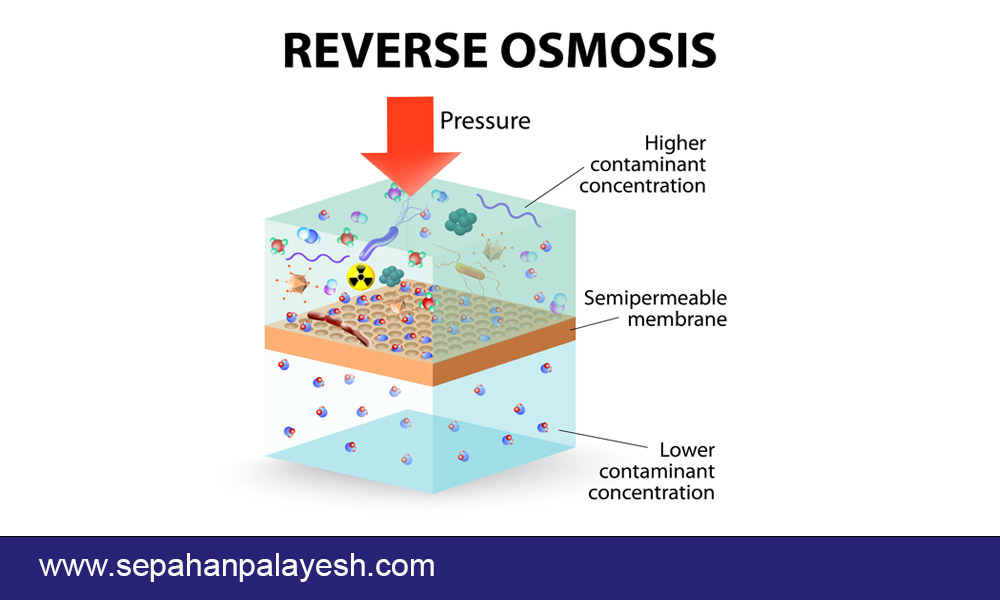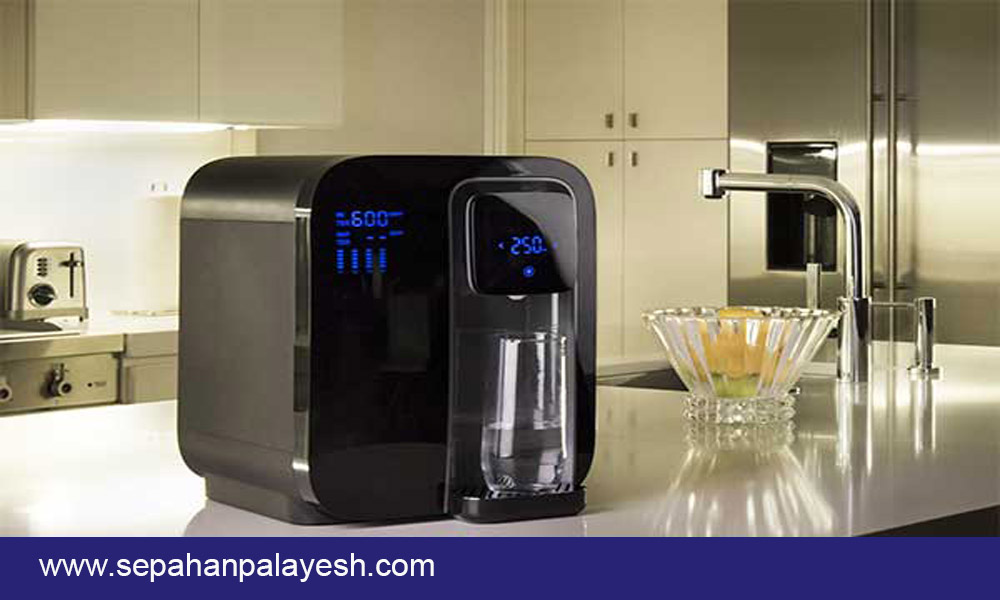Home Water Desalination
Home » Water Desalination System » Home Water Desalination
Are you planning to buy a home water desalination? Do you know the types of home water desalination and water purifiers? Do you know the advantages and disadvantages of using these devices? You can find the answers to all these questions on this page, so stay with us.
Due to the human need for water, there are some inventions for the desalination and sweetening of salty water. One of the best of these is water desalination devices. In this article, we will talk about home water desalination or home water purification.
The importance of using water desalination
Water desalination, also known as RO (reverse osmosis) systems. The home type of desalination is much smaller than other types and is used to purify water in the best possible way at homes. These devices are commonly used in areas where drinkable water is not easily accessible, such as many cities and villages in our country where the water supply system is not yet connected. People in these areas used river water in the past, but most rivers have dried up for various reasons. As a result, water aqueducts became the next option. Now, people need water desalination devices to utilize this type of water more effectively.

How does home water destination work?
A home water desalination system operates similarly to other water desalination systems. Salty water containing various solutes enters the device and is sweetened through pressure. There are different types of home water desalination systems, which we will discuss in further detail.
Types of home water desalination
Different companies manufacture various types of water desalination devices, including tap filters, reverse osmosis, under-sink, building entrance devices, three-stage, six-stage, and seven-stage devices. People who need home water desalination can choose one of these models based on their needs and budget.
Reverse osmosis is more popular than others due to its ability to provide drinking water. Reverse osmosis system typically comes in both smart and non-smart models. They are installed under the sink or other places in the house, and working with them is not complicated.
Application of home water desalination devices
Home water desalination systems are utilized for cooking, drinking, and bathing, and improve the drinking water quality in areas, where the water has high levels of salt and other solutes.

Problems with the home water desalination device
The home water desalination device has many advantages, but there are also some shortcomings to consider:
– These devices rely on electricity, so if the power goes out, they won’t work.
– The filters in these devices may lose efficiency with heavy use and should be replaced every one or two years.
– The desalination device has many components. If any part fails, the whole process will be disrupted. Repairing these issues can be costly.
Despite these drawbacks, many people still find the benefits of the water desalination device outweigh the disadvantages.
Buying a home water desalination device
The Water desalination device has numerous advantages, as it can eliminate various pollutants and solutes from water. Not only is it beneficial for those living in areas with limited access to clean drinking water, but many city dwellers also opt for home water desalination despite having access to treated tap water.
Sepahan Palayesh company is one of the most reliable companies in Isfahan for designing and selling various types of water desalination devices. The company specializes in designing and installing top-quality industrial and home water desalination systems with the highest global standards. To purchase a home water desalination system, contact Sepahan Palayesh for a free consultation.
FAQ about home water desalination device
The cabinet under the sink is the best location for installing a water purifier. The water filtration device has a minimal design and requires minimal space, making it suitable for small areas. The filtration device has an inlet, and the filtered water enters the water filter withdrawal valve through a second hose. Therefore, the installation of this device requires two hoses. A water desalination device or RO requires more space for installation but can be installed under the sink.
This amount equals 185 liters of water and can easily supply a family of at least five people. To fill a 3-gallon tank at this production speed, it would take between 5 and 7 hours.
Water purified by a reverse osmosis system has even higher quality than bottled mineral water. After going through the standard purification steps, the water becomes purified. Research has shown that purified water from reverse osmosis is purer than mineral water. Additionally, using a reverse osmosis water purifier helps you save money and protect the environment by reducing the need for plastic bottles.
The water purifier consumes very little electricity. The reverse osmosis water desalination device consists of electrical parts such as a solenoid valve, low-pressure switch, and water purification pump, and it uses electrical energy to control the operation of the device. The required electricity to operate each part of the device is between 24 volts and 1.2 amps. Consuming approximately 29 watts of electricity per hour by water purifier indicates this device uses minimal electricity.
On average, a family of four consumes 20 liters of water daily. That means the water purifier should only work four hours daily, consuming 140 watts of electricity. However, when the water purifier has a UV filter, its light is always on, leading to a constant consumption of 140 watts of electricity throughout the day and night.
When the experts install a home water purifier, it typically takes around 30 to 40 minutes. However, the exact installation time depends on the type of device. Before installation, it’s necessary to access electrical outlets, city water piping, sewage outlets, etc. Sepahan Palayesh has provided all the essential installation steps and instructions for your convenience.
The reverse osmosis water purifier provides drinking water through a separate tap. Therefore, choose a location to install the water filter valve. The sink is one of the best places for the installation. The water purifier valve should be installed on the cabinet surface if the sink is made of glass, granite, or other materials.
When there’s no electricity, you don’t need to unplug the water purifier, because the RO water purifier automatically turns off when not needed. However, if you’re away from home for an extended period, it’s better to turn off the device to prevent water leakage. Also, be cautious of low-quality water purification adapters that may pose a fire risk.
We strongly recommend using reliable power protectors with a guarantee to avoid potential risks related to power protectors. Using a power protector will help safeguard the purifier from issues during sudden power outages. Otherwise, there is a risk of damaging the device due to the lack of electrical protection.
That is a problem. The membrane filters should be replaced at least once every two years. If not, they can become contaminated with microbes and contaminate the water. Also, it can cause abnormal noise in the water purification pump, lead to failure of the purification pump, contaminate the tank, and cause the water pump to leak.
The device can be moved from its current installation, similar to a washing machine, and installed in a new place. Before relocating, drain the water from the purification tank and disconnect all the connections.
Please follow the following instructions:
First, turn off the inlet valve and remove the hose.
Close the water filter tank and remove the hose.
Remove the water inlet valve and cover the hole with a suitable cap.
We recommend seeking an expert to install the water purifier. Before installation, provide a water inlet valve, sewage outlet, etc.
